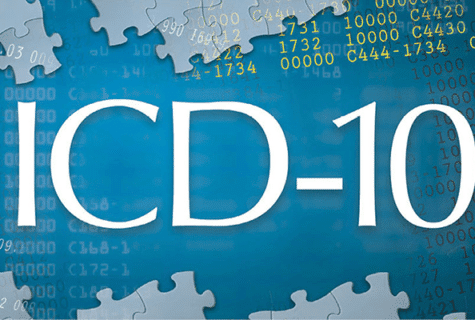
When choosing the most accurate ICD-10 diagnosis code, you’re often required to include all seven characters to prove the medical necessity for a procedure or office visit. If not, your chances of having the claim denied are significantly increased.
Nailing down that seventh character can be vital for getting your claims paid the first time around. Frequently, the seventh character — referred to as an “extension” — will depend on the episode of care associated with the visit or encounter type. You have three options in these circumstances:
- A — Initial encounter
- D — Subsequent encounter
- S — Sequel
For example:
- 311A — Abrasion of right elbow, initial encounter
- 201S — Burn of second degree of right hand, unspecified site, sequela
- 370B— Contusion, laceration, and hemorrhage of cerebellum without loss of consciousness, subsequent encounter
Let’s look at the types of care more closely so you know exactly which extension to turn to.
- Initial Encounter (Extension “A”) — You use “A” as a seventh character only while the patient receives active treatment for a condition. Examples of active treatment include surgical treatment, emergency department encounter, and evaluation and continuing treatment by the same or a different physician. Although new or different providers may see the patient over the course of care, you should assign “A” as the seventh character based on whether the patient is undergoing active treatment and not whether the provider is seeing the patient for the first time, ICD-10-CM says.
- Subsequent Encounter (Extension “D”) — “D” as your seventh character indicates that the patient has completed active treatment and is receiving routine care during the healing or recovery phase. For example, this might cover a cast change or removal, an x-ray to check a fracture’s healing status, removal of external or internal fixation device, or a medication adjustment.
- Sequela (Extension “S”) — You should only include extension “S” to report complications or conditions that arise as a direct result of a condition. For instance, scars are sequelae of a burn. So an office visit to address pain associated with scar stricture would qualify for “S” as your diagnosis code’s seventh character. In addition, there is no time limit for when you can use a sequela code, meaning that as long as the provider can link the current condition as a complication or late effect, regardless of how much time has passed, you should include the sequela extension.
Not every diagnosis will require a seventh character to indicate the encounter type, but many do. And if you miss this level of detail, you may not show sufficient medical necessity to support the procedure and/or service code(s) your billing. Getting it right, however, will help ensure your claim is paid the first time, avoiding costly denials, and in the best case scenario significantly delayed payments.
Take Aways:
- When reviewing ICD-10 codes, make sure you recognize when you need a seventh character to indicate the encounter type.
- Use A as a seventh character only while the patient receives active treatment — and it has nothing to do with whether the patient is new to the provider.
- Choosing a sequela diagnosis has no time limit. As long as you can link the current condition as a complication or late effect, it qualifies for S as the seventh character.
